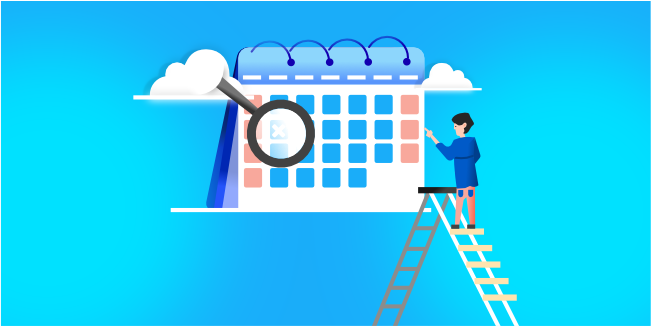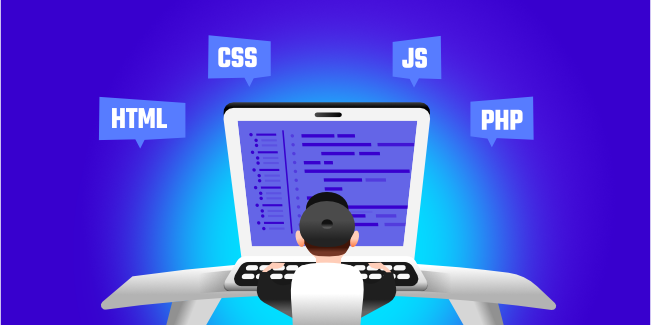webdevelopment
webdevelopmentbeginners
Web Development Best Practices for Beginners

As a software development company, we have created websites and web applications for our clients for many years. We know that the process of creating a website should proceed strictly, as described in our article "The process of creating a website in 7 steps". Procedures and processes minimize the risk of missing a task and ensure that each participant in the process knows precisely their scope of responsibility.
Creating a website with a company with an established market position and an exciting portfolio is undoubtedly easier, more comfortable, and faster.
Of course, you can create a website yourself and use ready-made templates, but such a website will not be unique - it will be like thousands of other websites and will not gain a market advantage. So before starting any project, consider working with the best product development company to increase your chances of success. If you need help finding a great, trusted partner, read our next article, "Choosing the Right Software Partner Guide (2022)".
Whether you create a website by yourself or with a trusted company, the following best practices for creating a website are sure to help you create a great website.
What Are Best Practices?
Best practices are a set of proven solutions and guidelines tailored to the specifics of a given industry. They show what you should follow in the development process to achieve your goal optimally and effectively. Best practices can be established by external institutions, the company's management, or from the experience of other companies or people who have already implemented a project. Regardless of the author of these tips, they always consist of specific methodologies, processes, or techniques.
Applying the best advice reduces the risk of failure, and it is quite logical: after all, why make the same mistakes that our predecessors made?
The idea of best practices is applied in almost all possible areas, such as project management, shop management, and even human resource management.
If you want to be sure that your website will be of high quality and will be appreciated by users, read the following practices and put them into practice. Thanks to this, your and your team's development efforts will be well-spent.
Best Practices in Web Development
Creating web pages is a process that requires knowledge, commitment, and experience. This experience allows us to avoid making the same mistakes twice. If you are new to the development process, see the web development practices that will help you implement a successful project. We have prepared the following list based on our many years of experience in building websites.
1. Planning

A good plan is essential if you want your software development project to be successful. The planning phase is just as important as the entirety of the development, implementation, and maintenance process.
Planning is a critical step in the software development process that must be completed before starting the project. While you can't predict every event, you should revise your plan regularly.
Maintaining key project assumptions, such as customer expectations and user experience, is crucial to the success of your product. If these goals change, you may need to scrap what you have and start from scratch, requiring more time and money than anticipated.
A detailed and accurate software development plan provides peace of mind and guarantees that the project will be completed successfully. The team must know the project's goals, milestones, and schedule to avoid working in chaos without a good plan, which is unlikely to result in success.
If you want to learn how to create an excellent plan for your project, read our article "How To Build Software Development Plan (2022)".
2. High-Quality Code
Maintaining clean and high-quality code is necessary to create a great product. Regularly testing and reviewing your code can find errors, guarantee correctness, and ascertain that your software will work well under pressure.
It must be remembered that the code must be simple. You may find this absurd, but in our experience, complicated, fancy code only causes problems and makes it challenging to locate any bugs. Besides, it impacts teamwork because team members sometimes exchange the scope of their work, which is a standard, especially in long-term projects.
Writing code must always have a purpose. If this goal is not clearly defined, the code becomes complex, and bugs occur.
Additionally, your web developers should always strive to leave the code in better condition than when they found it. It means that developers should regularly clean up small bits of technical debt so they can do this job after the start of the project. It should be a constant, everyday task for every programmer because only regularity will bring effectiveness and prevent gigantic and unnecessary work in the future.
3. Programming Languages

Before you start creating a website, you need to choose a tech stack that will perfectly match your project's needs. In our article "How to choose a tech stack for your project?" we have thoroughly discussed all the issues that need to be taken into account to make such a decision.
Every web developer who will create your website must know the programming language of your choice. Keep your website from building people who are just learning it. If, for example, you decide to use HTML, each developer must know HTML code and HTML documents and understand all current and deprecated HTML attributes. Every developer should know and understand terms such as "markup language," "css file," "css reset," or "web servers." These are the basics that are necessary to create a good website.
Remember that the software language must fit the needs of your project, not the other way around. If he starts to create a project with only the limitations of a given language in mind, you will not be able to create a quality product.
4. Compatibility
Assuming you're building a website for the average Internet user, it's important to remember that most people visit websites from more than one device. The majority of your website visitors will likely be doing this through a variety of mobile devices. Different devices like smartphones, laptops, and tablets have different screen resolutions and aspect ratios. Your developers' task is to make your website display properly and work on all devices.
Ensuring your website is compatible with multiple devices is essential to the website development process.
5. User Needs

Web development best practices must include a point about the user because the user must be at the center of attention.
Every time you create any web project, you should remember that this is a product for your users, which means that their needs and expectations must be met.
UX/UI is the user experience while navigating your website. If the user is satisfied, the time spent on the platform increases, affecting the higher income and increasing brand awareness. Therefore this point should always be included.
It happens that some people use the concept of UX (User Experience) and UI (User Interface) interchangeably, which is an obvious mistake. In our article "UI vs. UX - Two Types of Design. How are they different?" we discussed these two concepts in detail. We believe that only a thorough understanding of UX/UI design will allow you to create a successful website.
When creating a website, one must never forget that it is to serve the users, so it must be possible to introduce changes related to the appearance of future innovation. The use of modern technologies and following the current trends make the users evaluate the website very positively and become attached to it.
The user experience issue is extremely extensive, but it is worth exploring this topic if you want to create the perfect website. Especially for you, we have prepared an article, "Golden Rules of UX design," which should be read by every website or web application creator.
6. High performance
High performance in website development also depends on the page loading speed. People are impatient these days and don't want to wait too long for a page to load. But how much is "too long"? Research proves that it is only 2 seconds - this is how long the average user can wait. But if the page load time exceeds this time, most users close the page and choose another competing one.
Therefore, pages must have high performance and fast loading times (even in high-traffic situations). The page loading time is directly related to the bounce rate, which in turn affects the optimization of the page and its position in Google searches.
Therefore, pay attention to the page performance issues.
7. Search Engine Optimization (SEO)
If you want your business to succeed online, search engine optimization (SEO) is crucial. By improving your SEO, potential customers can find your business more efficiently through search engines and social media platforms. This increased visibility can lead to greater brand awareness and brand loyalty among consumers.
The website will get a better position in Google searches if it is immediately prepared in accordance with the methodology of page positioning. Since most developers need to learn SEO, it is best to invite an expert who deals with SEO. Many small businesses initially need to pay more attention to position websites on the Internet properly. Still, over time their awareness grows, and they try to correct this oversight. Our experience shows that the sooner you do it, the better it is for your project.
8. Security

Anyone who stores sensitive information on their site must ensure it is secure. To keep your website safe, you should use two-factor authentication and encryption.
The first step in data security is good hosting, which must implement all security protocols. If they are not there, your website is exposed to cyber attacks, data leakage, and, consequently, customer loss, as well as legal and financial problems.
In addition, each secure site must have automatic backups that will allow you to restore your data if something happens.
There are other measures to take data protection into account during the creation process, such as database protection, granting access rights, and using an HTTPS (Secure HyperText Transfer Protocol) connection.
In our article "Security in Software Development - Risks, Practices, and More" we have detailed the security issues that may be useful to you.
Summary
The above Web Development Best Practices result from our several years of adventure with software development projects. They will help you create a great website that will be successful both in terms of user satisfaction and gaining a competitive advantage. If you want to discuss your project with our specialists, arrange a free consultation at a convenient time.